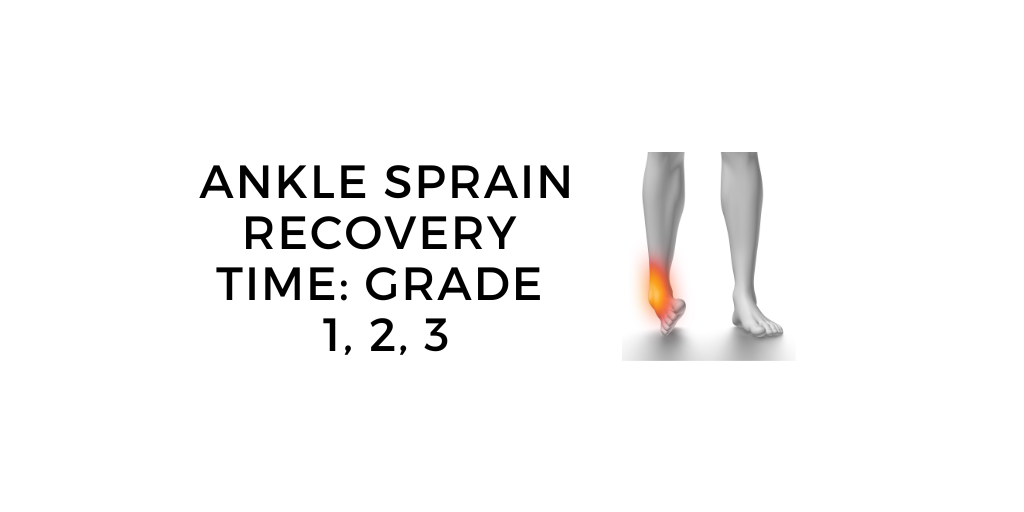
Ankle Sprain Recovery Time: 4 Tips to Recover 200% Faster
Ankle Sprain Recovery Time, Treating Sprains and Return to Play
Ankle sprains can be categorized into grade I, II and III. Grade I is the mildest with little to no swelling or bruising.
A grade II sprain has moderate ankle pain and swelling, while a grade III sprain is the most severe with significant pain and swelling.
So, what is your ankle sprain recovery time? Your ankle sprain recovery time is between 4 days to 3 months. Why such a large range?
The healing time for each of these sprains depends on the grade of sprain. Grade I can be healed within days.
Grade II in weeks and grade III in months. Read on to find out exactly how long it will take to recover based on your type of sprain.
You'll learn a unique nutrition plus exercise strategy that uses bone broth or collagen to speed up healing. The absolute best bone broth to use is Bluebird Provisions Instant Chicken. It has the collagen protein you need to heal you ankle asap.
First a quick note: this website is reader-supported. I spend a lot of time personally evaluating, testing and reviewing each product on this list. When you buy through links on my site, I may earn an affiliate commission.
What is an ankle sprain?
An ankle sprain is a common injury that occurs when the ankle is twisted or turned forcibly. This can damage the ligaments that connect the bones in the ankle.
Symptoms include:
- Pain
- Swelling
- Difficulty walking
- Discolouration
Ankles can be sprained in three different ways, and each type has a corresponding grade of sprain. And severity is measured by the grade of sprain, and can range from mild to severe.
What are the three types of ankle sprains?
The three types of ankle sprains are inversion, eversion and high ankle sprains.
1. Inversion ankle sprain
The most common type of injury is an inversion sprain, which occurs when the foot rolls inward as a result of landing on an uneven surface.
The severity of an ankle sprain is determined by the degree of damage to connective tissue and tendons. An inversion sprain can range from mild (Grade I) , which will heal within a few days to severe (Grade III) which can takes months to fully heal.
2. Eversion ankle sprain
An eversion ankle sprain is caused by the foot turning outward after rolling over a fixed object or as a result of an awkward landing.
3. High ankle sprain
A high ankle sprain is caused when the ligaments at the back of the ankle are injured.
The severity of a high ankle sprain is determined by the degree of damage to these tissues and tendons. It can range from mild to severe and can take 6 weeks to 2 months to heal.
What are the symptoms of an ankle sprain?
The symptoms of ankle sprain are pain, swelling, bruising, and stiffness. Why is there such swelling and bruising? Because the ligaments that support your ankle get overstretched or torn.
They are very common injuries and can affect anyone, from professional athletes to those with limited mobility.
The first step is to check for the symptoms of a sprain, which include:
- Sudden, sharp pain that forces you to immediately stop moving or take weight off the ankle
- Pain that's located on the spot of the injured ligament (for example, on the inside of your ankle),
- Swelling or bruising at the site of the sprain
- Limited or no ability to move your ankle a certain way or stand on it.
The tried-and-true treatment protocol includes rest, ice, compression (using a bandage), and elevation .
However, new research is showing that the RICE protocol may not be the best course of action. More on that below.
How is an ankle sprain diagnosed?
An ankle sprain is diagnosed by a health care professional by looking at the ankle and asking about how the injury occurred. The ankle may also be x-rayed to check for any broken bones.
If the sprain is severe, your doctor may order more imaging tests, including an MRI and CT scan.
That being said, from a practical standpoint, you can usually diagnose it yourself using some common sense.
For example: if your ankle is a bit swollen and stiff but starts to improve after 2-3 days, then you likely have a minor sprain.
On the other hand, if your ankle swells the size of a grapefruit with heavy bruising and discolouration, you are likely dealing with a grade 2 or grade 3 sprain.
How long does it take to recover from an ankle sprain?
It depends on the severity of the ankle sprain, but it usually takes a few weeks to recover from an ankle sprain. This time is needed for the ankle to heal properly.
If it is more severe, it may take a few months for the ankle to heal sufficiently. They can range in intensity and take different amounts of time to recover.
Healing time depends on the level of injury and may include medication, physical therapy, and stability devices.
The total process takes 2-8 weeks and may take longer for those with more serious injuries. It may take up to 12 weeks for full post-operative recovery from the brutal Grade III.
What are the best ways to speed up the recovery process from an ankle sprain?
There are a few key things you can do to in the first 48 hours speed up the recovery process from an ankle sprain:
- Rest: This is the most important thing you can do to ensure a speedy return to sport.
- Compression: Wrap the ankle with an elastic bandage or compression wrap to help reduce swelling. I really like this ankle compression wrap for this purpose or else get a floss style wrap to control the level of compression yourself.
- Elevation: Prop the ankle up higher than the level of your heart to help reduce swelling and promote blood flow.
- Movement: You want to get the ankle joint moving as quickly as possible after injury.
After the first 48-72 hours, there are additional steps that need to be taken in order to speed up the recovery process.
You must focus on building strength and stability around the ankle, as well as working on balance and proprioception.
This will build stability and confidence using your ankle in the future. This will also establish a proper range of motion under load to prevent stiffness.
Speaking of which, learn more unique tips for treating stiff joints.
Ankle Sprain Recovery Time Based on Severity of Injury
Ankle sprain recovery time is between 4 days to 3 months depending on the severity, diagnosis and treatment options you have available to you.
Proper diagnosis and treatment is critical to ensuring quick turn around and preventing and long-term issues like chronic ankle instability or post traumatic osteoarthritis.
There is a range of seriousness for sprained ankles, with most cases taking 3 weeks to 6 months to heal depending on the type of the injury.
Grade 1 Sprained Ankle Recovery Times
A grade 1 ankle sprain recovery time is anywhere from 2 weeks to a month, normally closer to the two-week mark with proper treatment. A grade 1 is the least severe and, accordingly, requires the least amount of time to recover.
A grade 1 sprained ankle can be treated almost entirely at home.
Grade 2 Ankle Sprain Time to Heal
A grade 2 ankle sprain time to heal is between 6 and 8 weeks. If you are incredibly diligent with your rehab, you can usually shrink this down by a couple of weeks.
A grade 2 sprained ankle causes moderate pain, swelling of the joint, and some joint instability.
Grade 3 Ankle Sprain Time to Heal (Ligament Damage)
A grade 3 ankle sprain recovery time is 2 months or more. It requires medical attention and is typically treated with surgery.
Grade 3 are characterized by damage to or a rupture of the ligaments, tendons and bones. You may have extensive bruising and swelling and the ankle is often deformed.
Grade 3 sprains can cause severe pain and instability in the ankle joint. The injured person may be unable to put any weight on it. But not to worry, you'll be back on you feet in no time.
What's the best way to treat a foot or ankle sprain?
The best way to treat an ankle sprain is to rest the ankle, apply compression, elevate the ankle and return to gradual movement as quickly as it allows.
Sprain Treatment Ankle Recovery Phase
1. Rest Until You can Weight Bear
Get off your feet for 2-3 days if it does not allow weight bearing. Not too long, you don' want to baby it too much unless it is a grade 3.
2. Compression to Reduce Inflammation
This involves compression bands, not simply a sleeve around the wounded area. You want to really wrap the ankle joint so there is some tension during the remodeling phase.
Once you get the correct tension, try to do ankle circles as wide as possible for 10 reps. This will feel strange and restricted. That is the point. Take the band off after 2-5 minutes as it will start to cut off circulation.
Repeat this throughout the first few days of injury.
3. Elevation Therapy
In a seated position, elevate your ankle above your heart to allow from proper blood flow. Do this anytime you're resting or off your feet.
4. Return to Light Activity, Sports As Soon As Possible
You need to get the ankle moving quick! By move I mean move your ankle joint.
Keep doing wide circles with the band. From here you want to draw the alphabet in the air with your injured foot (while seated). Do this at least 3 times per day. Ideally 6.
You need to get the joint moving as quickly as it will allow in order to expedite healing.
Once you can weight bear comfortably, you should be doing some light walking, calf raises and stability exercises as it allows. You can also do band assisted ankle inversion or eversion exercises.
Ankle Self Treatment Nutrition Strategy That Strengthens Your Ligaments
There's a new rehab strategy that is showing short treatments times for ligament and tendon injuries.
The newly developed protocol includes targeted strengthening exercises combined with specific nutrient timing. And it can be done at home or at the gym.
Your body needs certain nutrients for your ligaments.
Collagen is a popular supplement but many don't know that it MUST be taken with vitamin C to work for your tendons and ligaments.
Most people do not know that bone broth is a superior form of collagen because of the natural electrolytes found in bone broth.
You can learn more about bone broth for healing here.
You can maximize collagen production in your ankle by doing the following protocol:
- Take 15 g or 1 cup of bone broth, collagen or gelatin with 50 mg vitamin C
- Wait 45 mins to 1 hour
- Then do your rehab exercises that specifically target and load your ankle joint
The exercises are important as the loading of your ligaments helps to shuttle more collagen into them to promote healing (1).
Want to use bone broth for this strategy? Get 10% off Bluebird Provisions bone broth when you enter code: ANKLE at checkout.
This helps to stimulate new tissue growth which will rehab your ankle.
For ankle injuries, you'll want to perform calf raises or some variation that targets your ankle joint under load. Wait until you can achieve the 3/10 pain rule before doing these exercises. Remember to relax your toes.
You want to load your ankle for 4-8 minutes total. And you can do these exercises twice daily.
Split this up between 3 sets of your exercise to start with 2-3 minutes of rest in between sets. Repeat daily.
Leave a comment if you have any specific questions about this strategy or ask your physiotherapist.
Use Pain to Guide Your Treatment
Let pain be your guide. Do not exceed 3/10 pain during the rehab exercises.
If you are experiencing pain greater than 3/10 during or after the exercises, then you probably did too much. Changes in movement patterns can initially be protective, but walking normally should be resumed as soon as possible.
What about ice?
Ice is out. Top researchers, physiotherapists, and clinicians are not using ice anymore for sprains or similar injuries.
Ice is bad for injuries because it can cause more damage and obstructs the normal body healing process. It constricts the blood vessels and reduces circulation, which slows down healing.
Rehabilitation Phase Strategy
The best way to treat an ankle sprain is with a rehabilitation program that includes:
- Restoring range of motion
- Rebuilding strength
- Rebuilding balance and confidence
- Progressively reintroducing high impact loads
- Training specifically in balance and control
They can be treated with a supervised and specific exercise program. This will speed up healing and prevent recurrence of the injury.
You are best to find a physiotherapist to guide you through this process in order to prevent future injuries.
You can sometimes guide this process yourself. I have done so in the past. But you must ensure you do your research are restore proper strength and range of motion. Or else, you will suffer long term consequences.
For example, I have sprained by ankles 5-10 times over my life. Now my foot and ankle mobility is so poor that is causes calf and achilles issues.
What's the best way to prevent ankle sprains?
Ankle sprains are a common injury, and the best way to prevent them is by doing ankle exercises to improve strength and flexibility, using proper footwear and avoiding dangerous activities.
Focus on unilateral (or 1 leg) exercises like lunges and squats. Simply balancing on one foot can help build the intrinsic foot muscles and stabilizers to help prevent them.
Pro tip: balance on one leg while you're brushing your teeth at night.
They can occur due to a number of factors, including overuse and lack of ankle stability. So we must strengthen your ankles ability to withstand loads at different angles.
Sprained Ankle Risk Factors
Sprained ankle risk factors include playing sports on an uneven surfaces, having balance problems and wearing shoes that don't fit well or are not suitable for the sport you are playing.
There are many additional risk factors for sprained ankles:
- Overuse
- Walking on uneven surfaces
- Wearing high heels
- Returning to sport or ramping up too quickly
- Trail running
- Turf sports
- Jumping sports
Ankle sprains can be treated with rest, compression and movement. Read above for a specific protocol to return to play as quickly as possible.
If the sprain is severe or if it results in a bone fracture, surgery may be required.
Closing Thoughts
They are incredibly frustrating! Ankle sprain recovery time is 4 days to 3 months. This depends on the severity of the injury.
You must properly rehab your first sprain using the steps outlined above to ensure you don't get subsequent injuries.
I will summarize them here:
- Rest: Get off your feet
- Compression: Helps stimulate healing and blood flow
- Elevation: Get it above your heart when you're resting
- Movement: Don't baby it. Get it moving as quick as pain will allow
You can use foods like bone broth to heal your them quicker. Try some Bluebird Provisions bone broth today and get back to doing what you love.
Disclaimer: I am not a physiotherapist or occupational therapist. It is always best to consult their advise first. This is not medical advise and is for informational purposes only.
Bluebird Provisions is reader-supported. When you buy through links on our site, we may earn an affiliate commission. As an Amazon Associate, we earn from qualifying purchases.

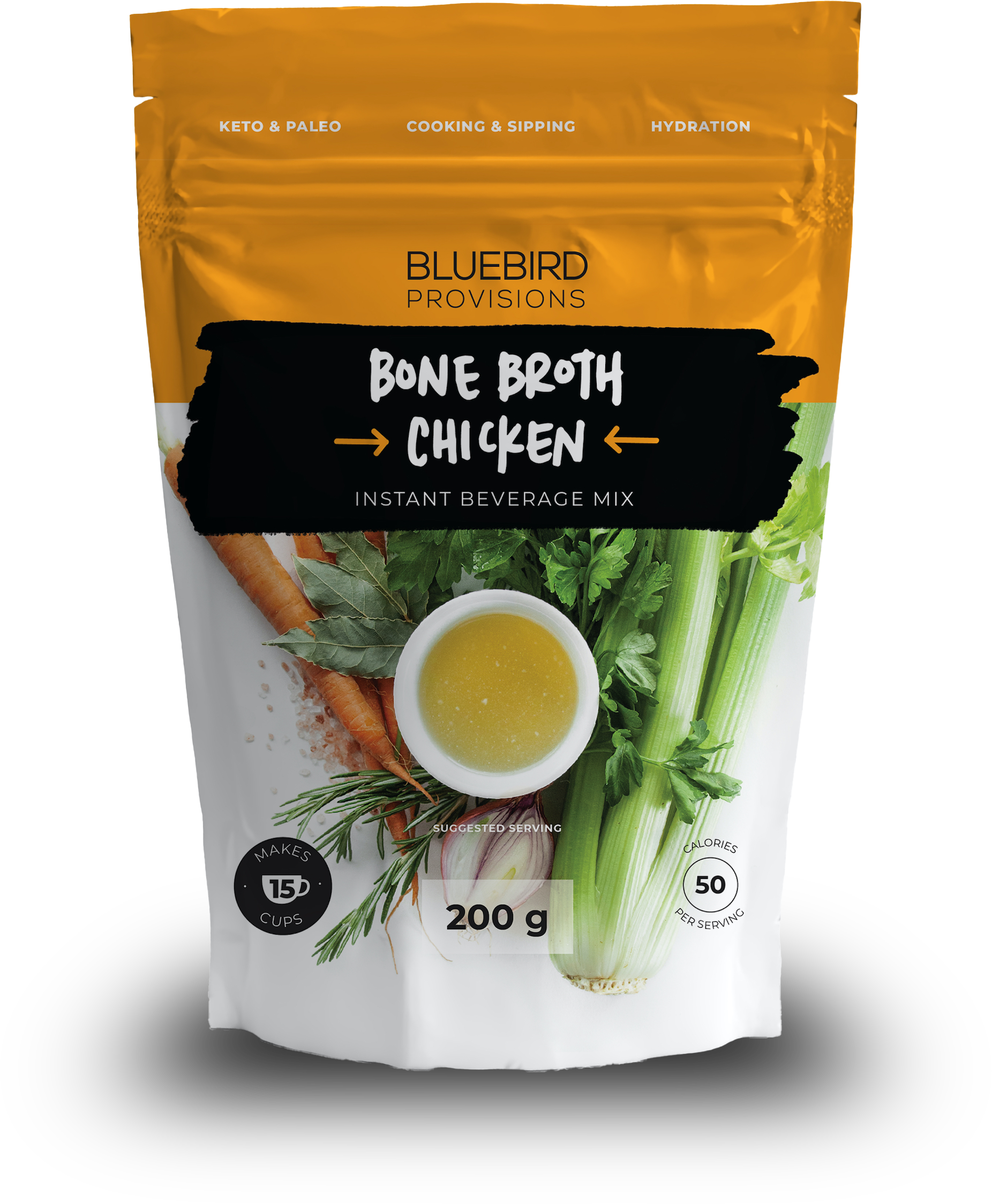
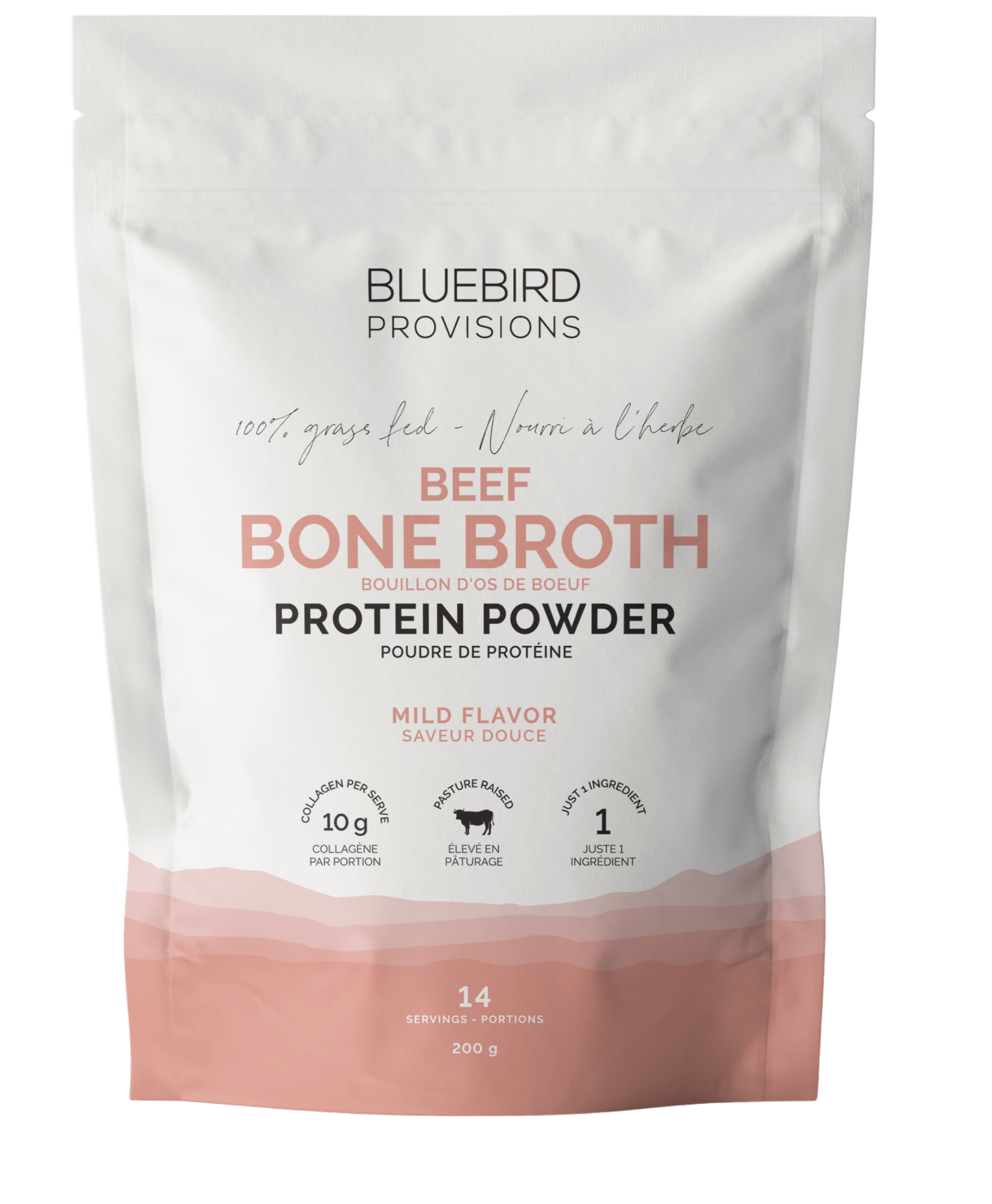
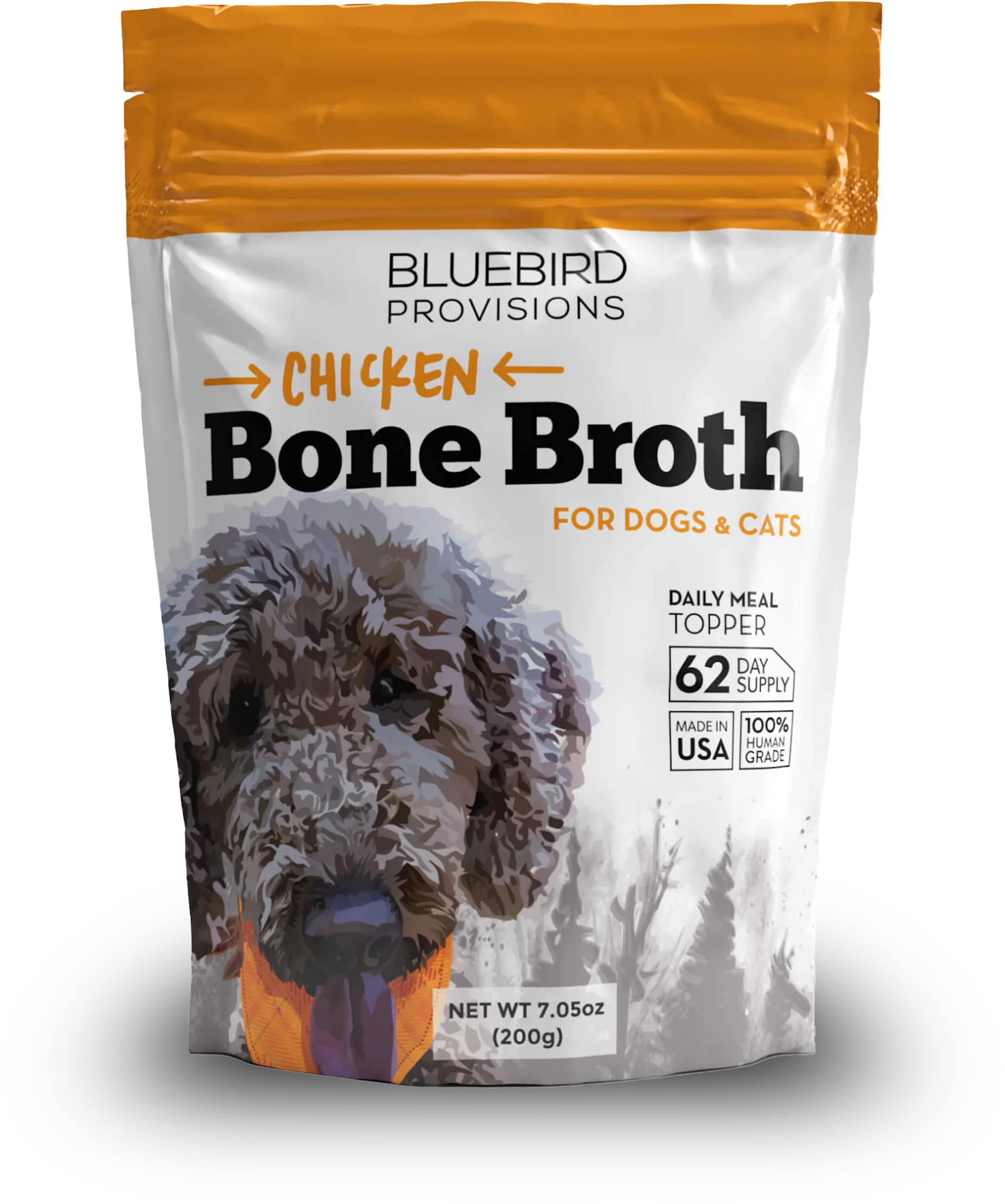
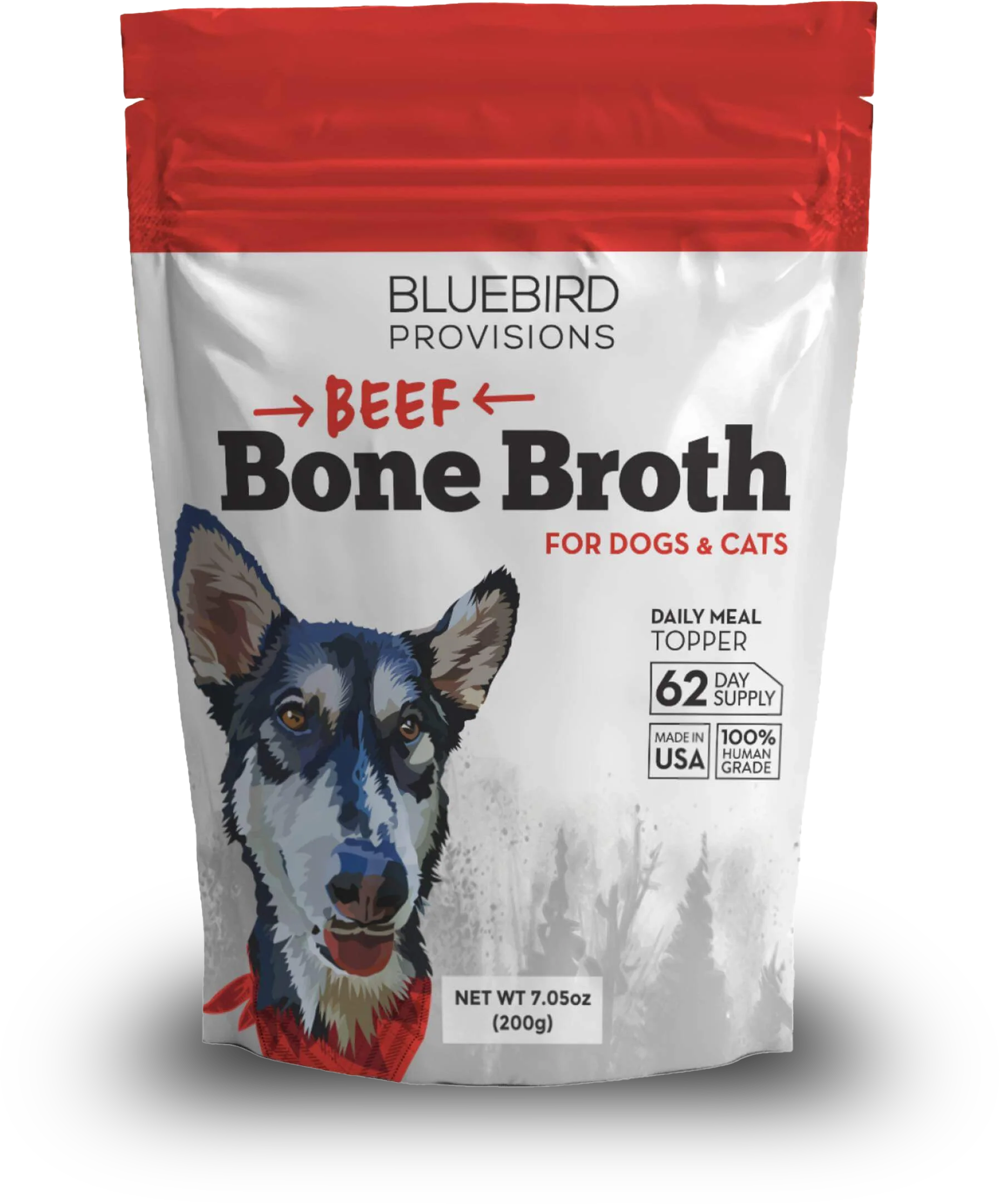
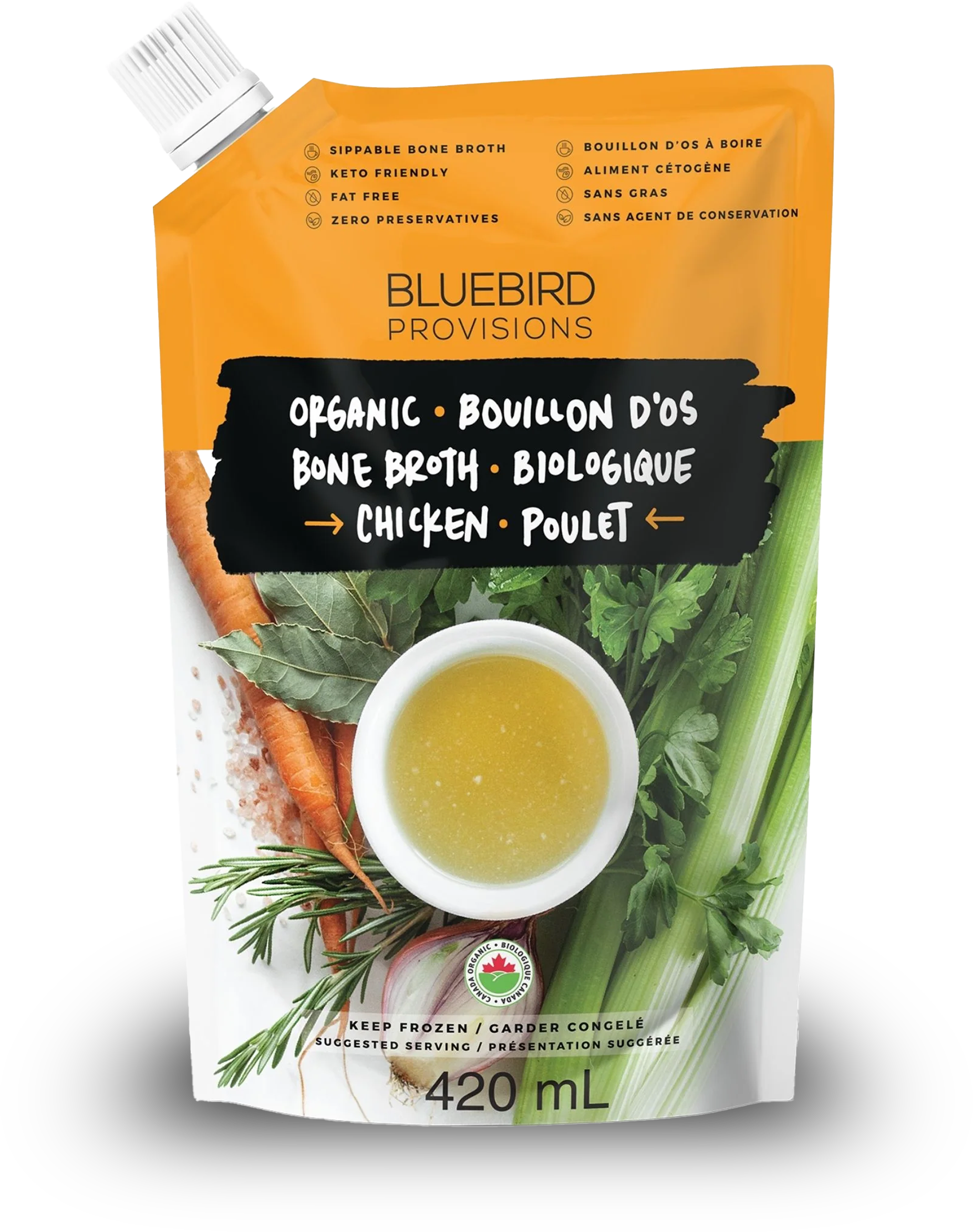
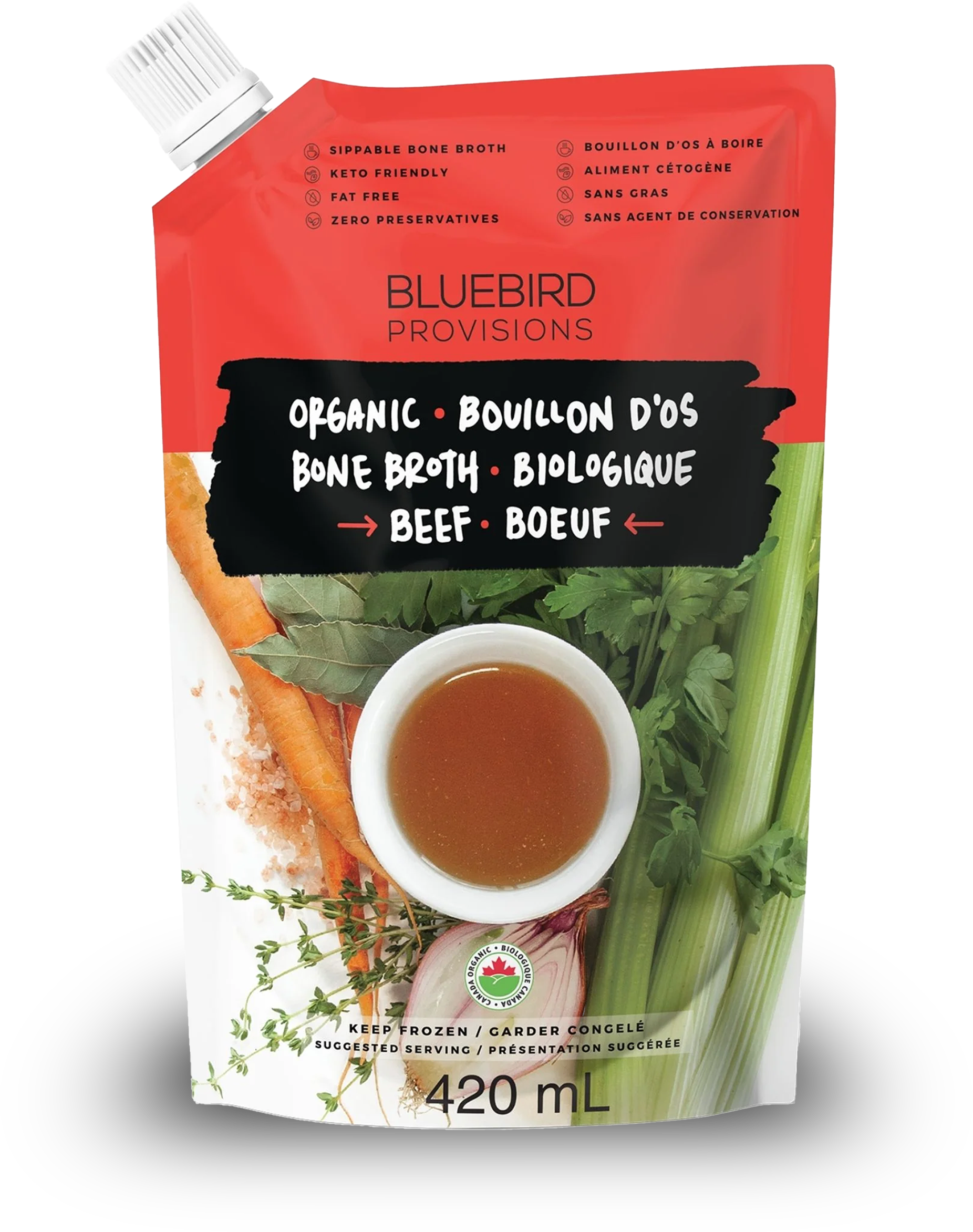








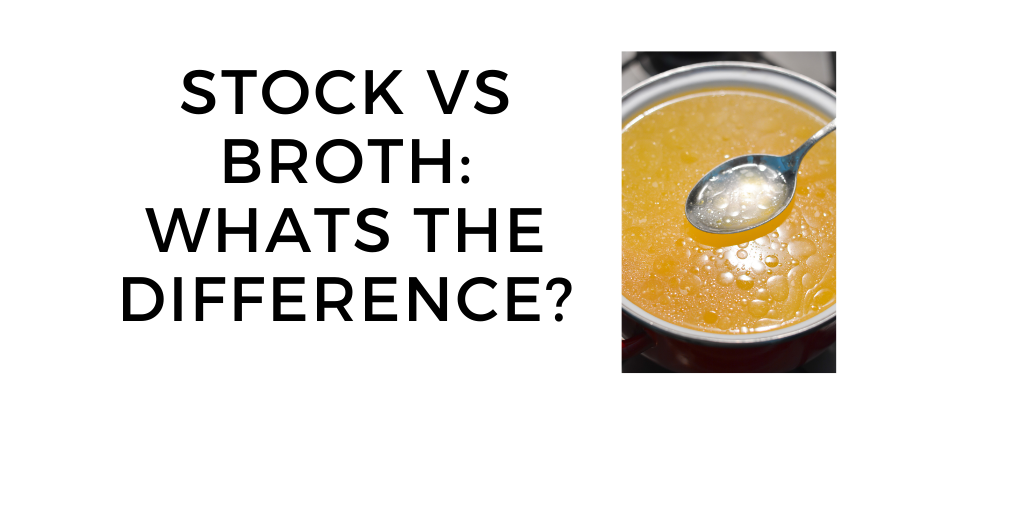
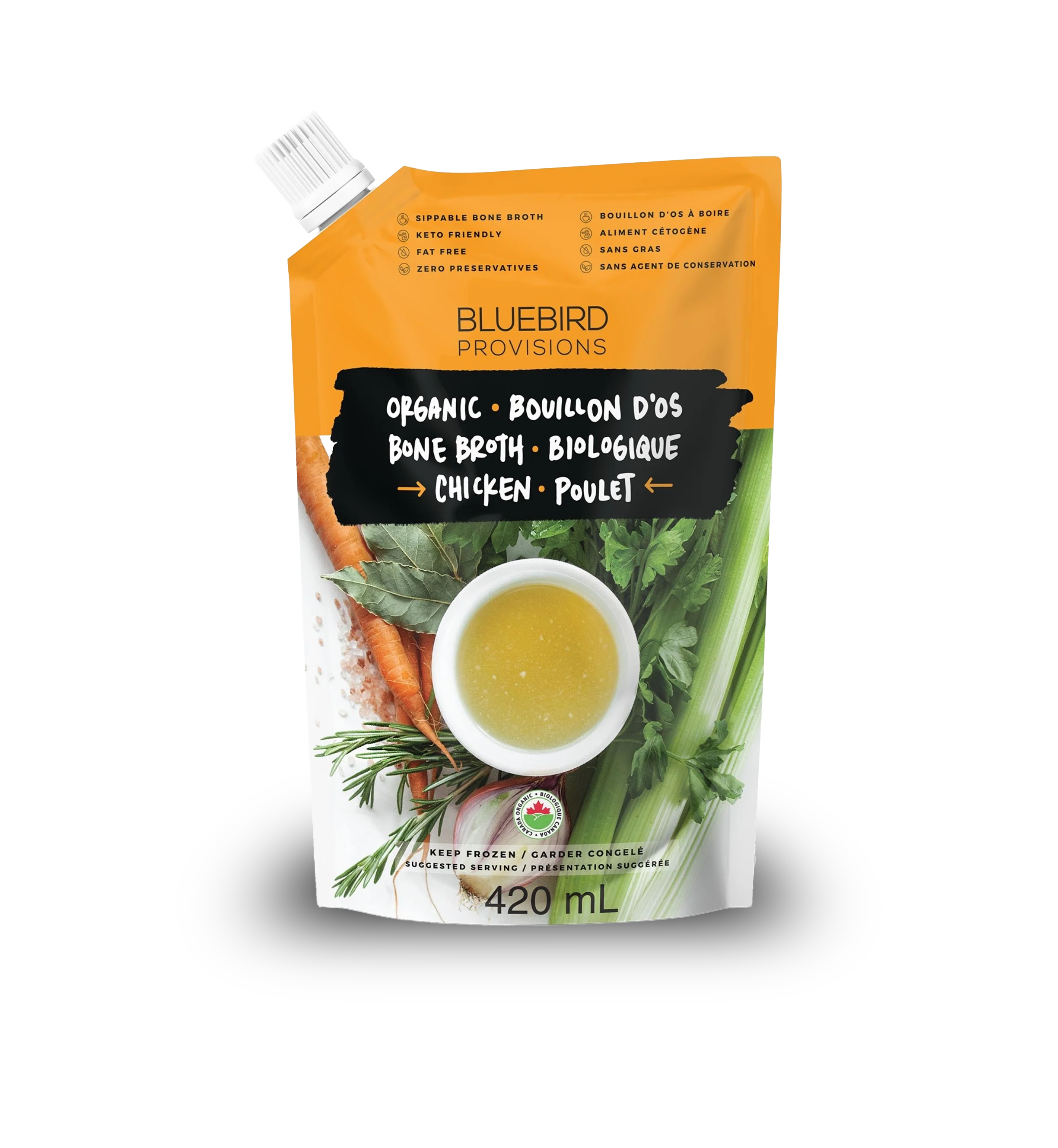
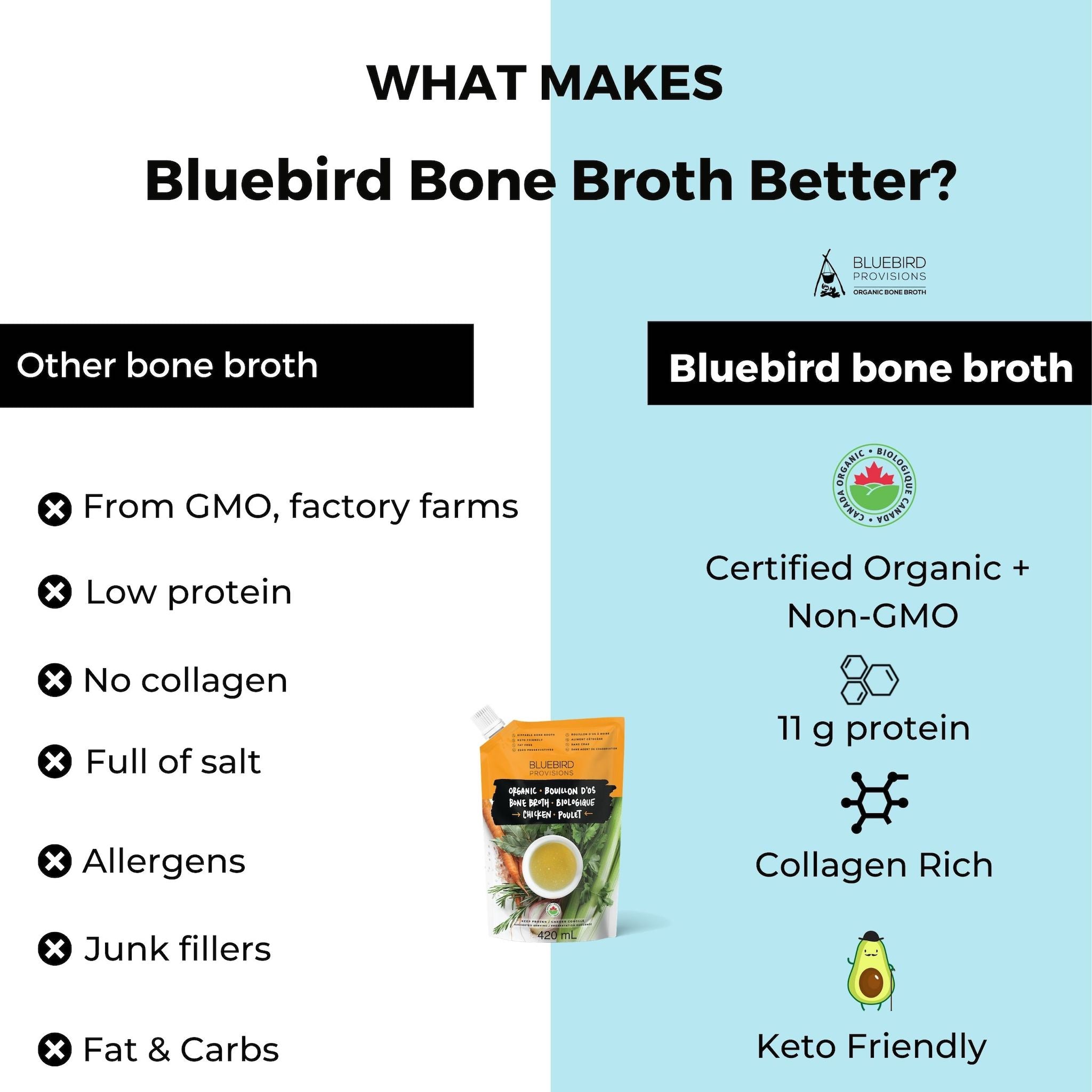
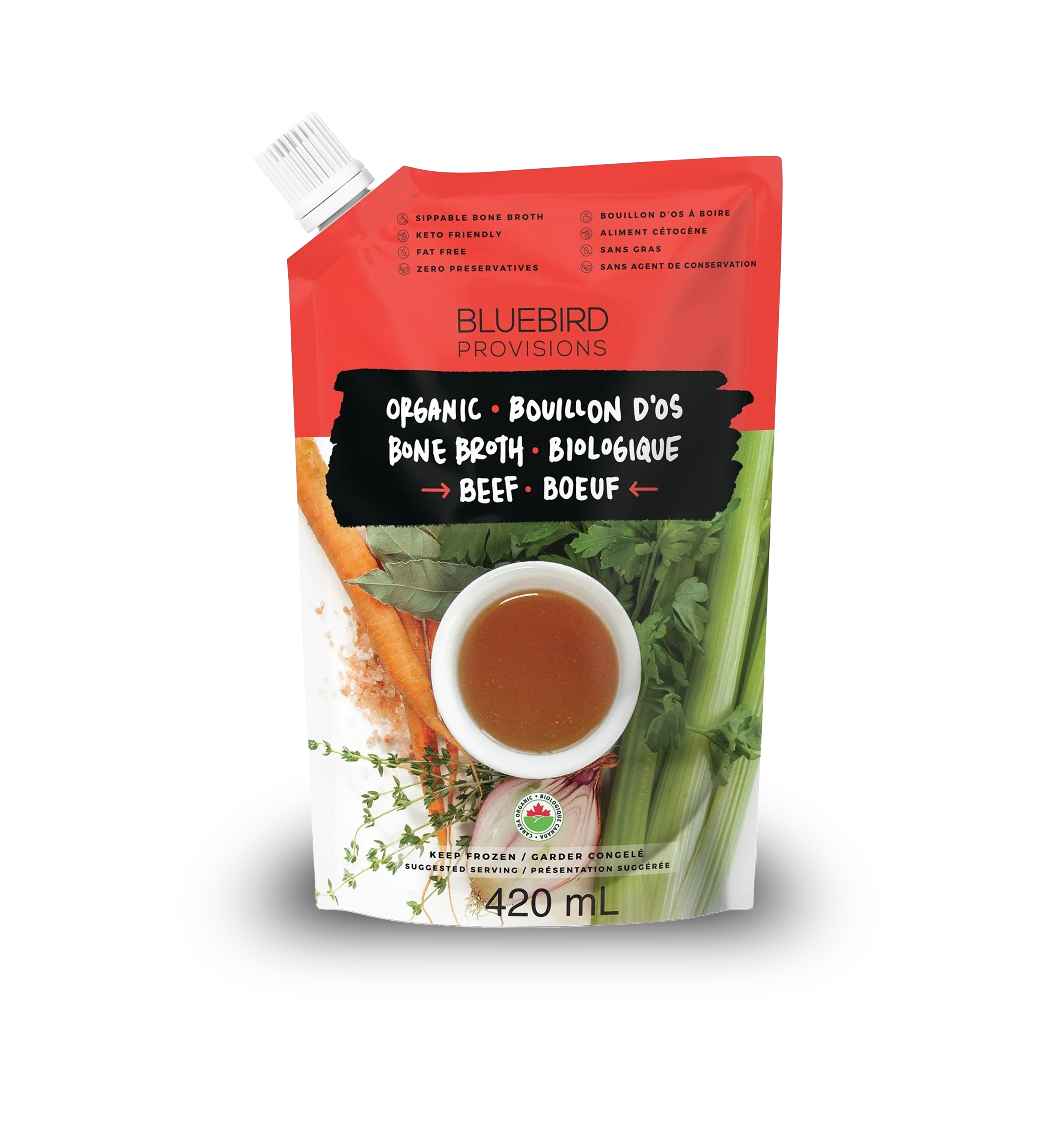
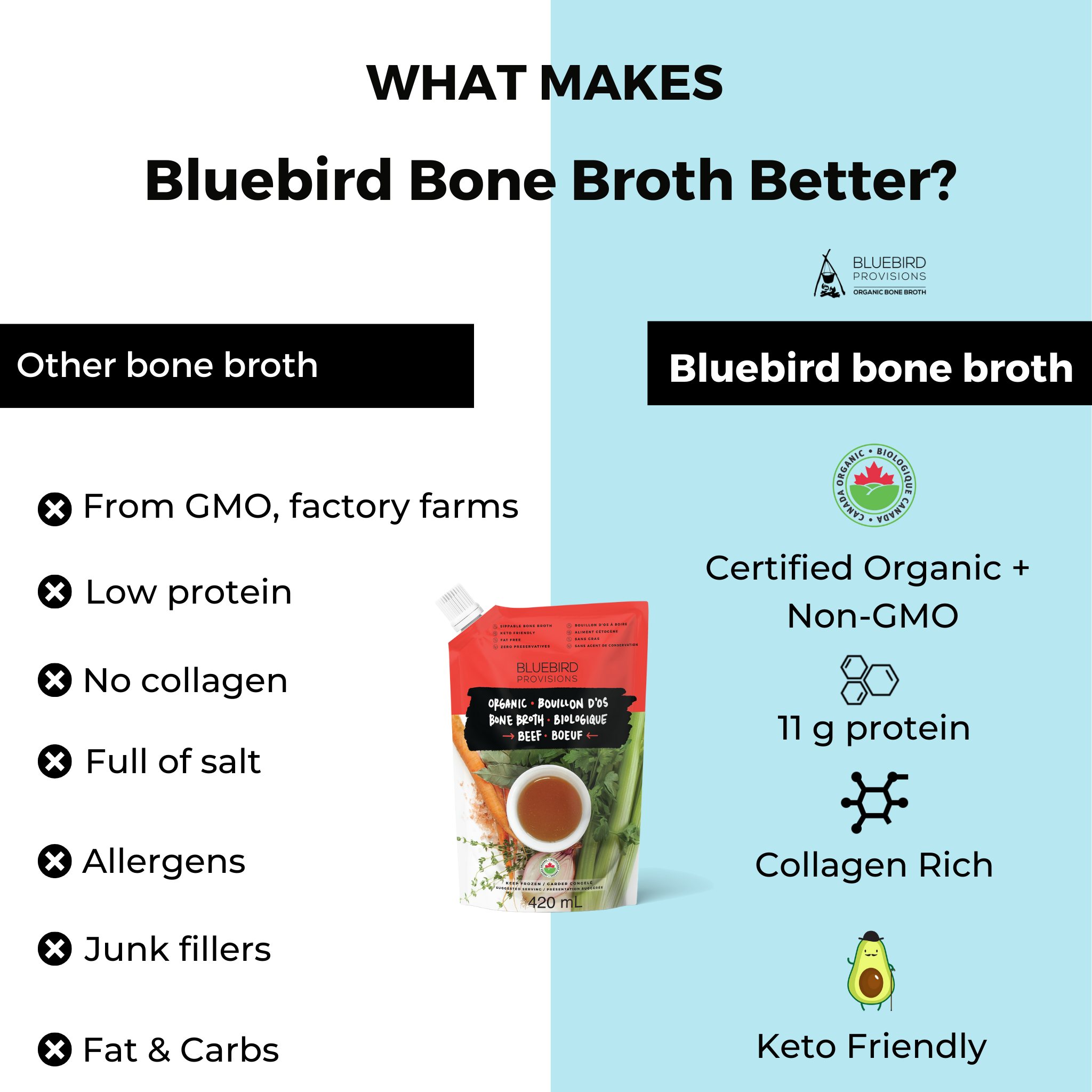
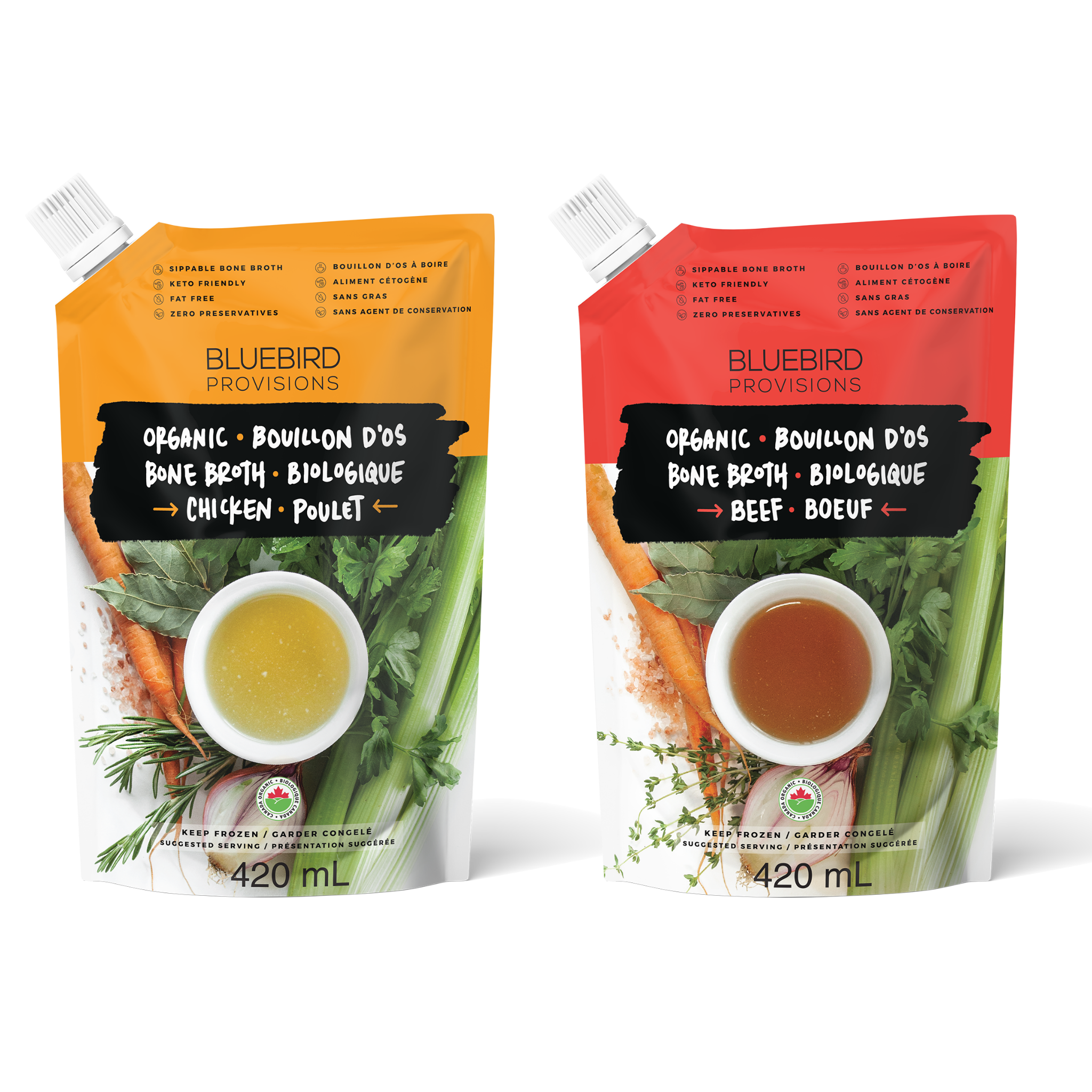

19 comments
Hi David ,
Yes red light is worth a shot. At the very least you won’t be hurting recovery and it could help speed things up!
Connor at Bluebird Provisions
I was wondering if I could use redlight along with the other stuff mentioned here, I sprained my ankle a day ago and am trying to get back into sports as soon as possible
David
Sorry to hear about your ankle Pat, what a bummer. My guess is that you may have ramped up a bit too quickly. Let pain be your guide. If it is 4/10 or worse after activity (or the next morning) while you do daily activities (walking, etc) then you likely did too much.
I would stick with the PT and ramp it down like you are. Then gradually build back up again.
Connor at Bluebird Provisions
severely sprained ankle grade3/high beginning of march. all 3 ligaments partial/full tears.
no fracture. no lesions.
crutches for a week. boot for 3.
started pt right away.
back to lacrosse training 5 weeks post injury with brace. usually very sore after. then began soccer training & games about 8 weeks post injury.
it has been ok but deal with soreness & some pain after trainings/games. can also feel it during the games a bit too.
last week (4months post injury) attempted a intense training with more moderate sleeve type brace instead of bulky brace.
after it hurt on side ligament and now hurts alot when i run & cut so not able to do much so taking 1/2 weeks off dont recall reinjuring it.
have been averaging pt 2x a week since injury.
is this a common recovery phase of dealing with pain in return to play 4 months after? or did i return too early? and am i headed for ligament surgery?
Pat
Sorry to hear about your ankle Kim. I would definitely get some more firm compression on it as soon as possible and do the ankle circles with compression on as I mentioned. You can release the compression after the circles if it is too tight. Then repeat this a few times daily as pain allows.
let me know how it goes!
Connor at Bluebird Provisions
I sprained my ankle two days ago and immediately iced because of prior knowledge of the RICE method. After reading your article and reviewing the material you provided in a comment below, I determined to quit icing, as of yesterday. My question is more about the compression. I have compression socks that go over the ankle. Do you think that’s sufficient compression, for one? And is there evidence that better late than never holds true to adding compression or has my icing already damaged the healing factors? Thank you.
Kim Spencer
This is a fantastic article, best I have read since my ankle injury research.
The no ice advice is spot on with new research but interestingly my Mum and her generation from Indian subcontinent-knowledge always said ice should not be used. Research now supports that.
Love the 3/10 rule and recovery advice. I am going to pass this article along and save it.
Promila Trust
Hi Pina , sorry to hear about your injury. I would speak to a physiotherapist to get the best advise.
all the best!
Connor at Bluebird Provisions
Hi adriana, the general rule is that pain anything above 4/10 on a personal pain scale when doing the exercises or afterward is ok to proceed. In your case if you are limping and the pain is really bad, it sounds like it may be higher than 4/10, in which case I would wait until it goes down a bit.
hope this helps and all the best on your recovery. It will get better!
connor
Connor at Bluebird Provisions
Right Ankle ligament tear due to ankle twist. Severe pain, side swelling has gone but after a month also swelling on ankle is there with pain. I can walk like baby steps and while walking ankle pains .
Started with basic ankle rotation exercises. Still not confident about its recovery
Pl guide me with line of treatment
Pina
Hi I diagnosed for high ankle sprain grade 2….I stayed with boot for 21 days….now I had range of movement better but I tried to bare weight an I tried to walk few steps for 3 times and can’t pain increase and I limp because of the pain …..I’m doing strengthen exercises with recistance bands inversion etc…..should I keep avoiding to walk or do I have to continue? That’s my question ….because now i have 2 months without walking….
adriana
Very nice
Sandeep sahu
Hi bluebirdprovisions.co owner, Keep up the good work!
Bianca Rude
Hi Steve,
The goal of my writing is to empower you to do your own research and decide what is right for you.
Here are a few things you can read further. But if you decide you want to use ice, by all means do it.
https://www.ncbi.nlm.nih.gov/pmc/articles/PMC8173427/
https://pubmed.ncbi.nlm.nih.gov/18212134/
https://www.ncbi.nlm.nih.gov/pmc/articles/PMC5339266/
Connor at Bluebird Provisions
My doctor says ice and you are saying no. Do you have a link to the study? What type of doctor are you? What medical school did you graduate from? Are you telling me not to follow my doctors instructions?
Steve
Glad to hear that Chris. Hope you ankle is healing up!
Connor at Bluebird Provisions
Thank you very much because of this post I have learned something new. I will spread this to others so that they will also know about this.
Chris Love
Thanks James!
Connor at Bluebird Provisions
Good Information to help with healing, like the “does & don’ts” of said injury.
James Tieman
Leave a comment
This site is protected by hCaptcha and the hCaptcha Privacy Policy and Terms of Service apply.